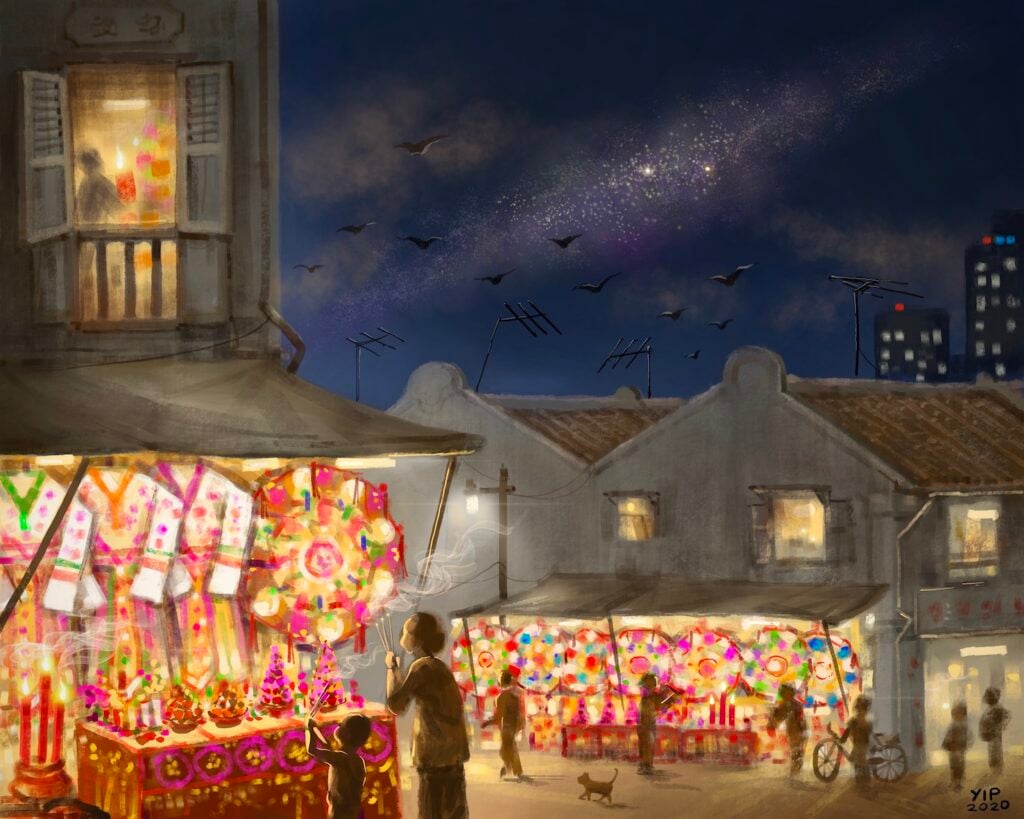
On the seventh day or the seventh lunar month, a loving couple separated by the Milky Way, will reunite and be able to spend a day together. Look up the sky, spot the Milky Way and the two brightest stars. The Legend of the “Cowherd and Weaver Maiden” (牛郎织女), is a well-known ancient folklore known amongst the Chinese, Korean and Japanese communities around the world. It tells the story of a loving couple, a mortal Cowherd and a Fairy from Heaven, who are separated by a Silver River (Milky Way) but are allowed to reunite once a year on the 7th day of the 7th lunar month. On the 6th night, thousands of magpies start to form a bridge across the Milky Way to help them reunite. This day of enduring love, longing and reunion is celebrated with a colourful festival – 七夕节 by the Chinese, Chilseog by the Koreans and Tanabata by the Japanese. Join me at the Milky Way to give the couple our support! Let’s also pay remembrance to the many families and loved ones who are separated by cruel wars and politics, many whom may never see each other again.

Up till the late 1970s, on the seventh day of the seventh lunar month, a colourful Chinese Festival 七姐诞 (Seven Sisters Festival, or Double-seventh Festival 乞巧节) would turn Singapore Chinatown into a fairytale land of colourful paper arts and crafts. As a child, I remembered thronging the streets with my grandmother to view the colourful displays and offerings. Every shop and household would display a circular paper-made pan (七姐盆) decorated with colourful paper-made flowers, mirrors, combs, jewellery and cosmetics for ladies. On some streets, a few shops would combine effort to set up a tent to display elaborately made paper dresses, cone-shaped floral pots and offerings. My mother would also buy a small paper pan to display and pray at home on the seventh night.
This Festival was brought to Singapore from China by the Cantonese migrants. It was popularly celebrated by the young ladies and especially the Majie maid servants (妈姐). Majie often wore white blouse, black pants and combed their hair into a bun as a vow of celibacy. Majie were known to be trustworthy and hard working servants for rich families. Have you seen my very first public mural at Everton Road which depicts a Majie doing laundry for a Peranakan family? There is also a Majie Temple at Chinatown Keong Saik Road.By the late 1980s, with development and modernisation, the Seven Sisters Festival has vanished without a trace, save for the Milky Way and the often untold legend. This quick digital sketch was drawn based on my memory. It depicts my grandmother and I thronging the streets of Chinatown on the Festival’s heyday night in 1975. As it is quite hard to find online coloured photos of the Festival in Chinatown in its heyday, I hope my re-imagination allows you to feel the mood of the Festival!